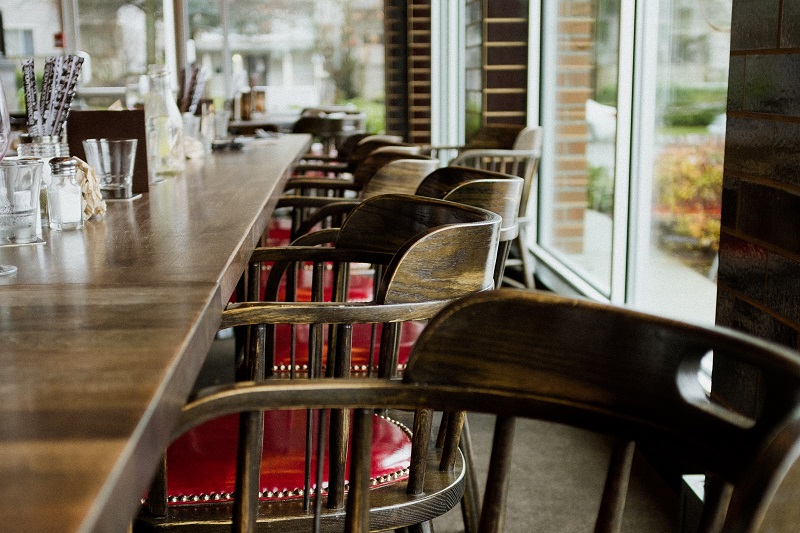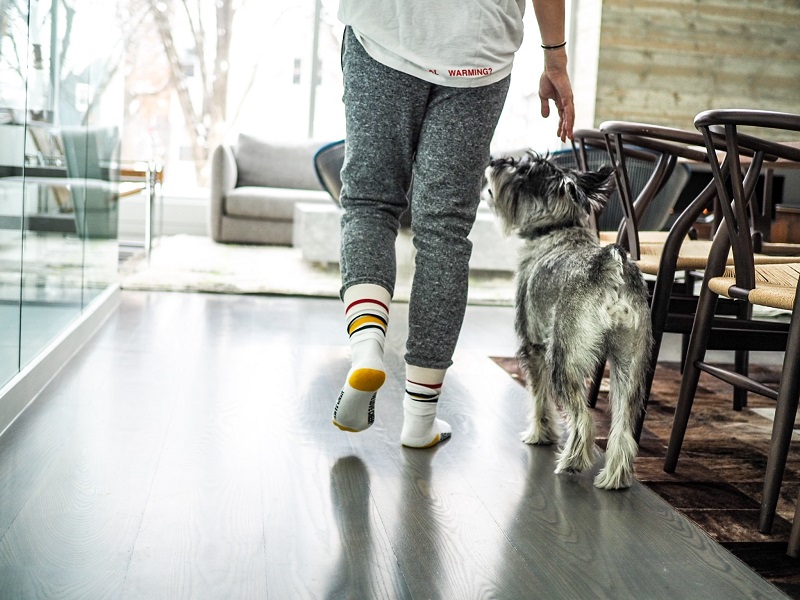COVID-19 Shutdowns have given businesses and individuals a chance to make lasting change on how they do business and conduct their lives.
The key to success in a coronavirus world? Flexibility and agility.
Businesses and individuals have adjusted dramatically in the face of social distancing measures. But as Colorado culture begins to reopen, what should not go back to normal?

Restaurant Industry Amid COVID-19 Shutdowns
Franco Pisano, chef-owner of Paravicini’s in Old Colorado City, is looking forward to his restaurant reopening to diners. But even when that happens, Pisano won’t be racing back to business as usual.
Before the COVID-crisis led Governor Jared Polis to issue a ban on dining in, Paravicini’s did not offer meals for pickup, but Pisano anticipates that the service will continue to be a hit even after restaurants begin reopening.
He’s even planning to convert his smallest dining room into a to-go station, saying, “We’ll do it as long as people want it, you know what I mean?”
Paravicini’s cooking classes are not business as usual, either. Every Wednesday, “students” who have pre-purchased ingredient kits from the restaurant tune in to Facebook live to cook an Italian dinner with Chef Pisano. Participant numbers have ranged from 40 to 80, says Pisano, with between 1,000 and 2,000 views per video.
Part of the statewide ban on dining in included a provision designed to help bars and restaurants survive the shutdown: to-go alcohol. For a limited time, bars and restaurants may legally sell alcoholic drinks for pick-up or delivery service.
That rule certainly eases burdens on restaurants or bars that rely on revenue from alcohol sales. But the community response to “cocktails to-go” has been overwhelmingly positive, and many patrons are hopeful that the new rules will could be here to stay.
Restaurant-food innovations like these will not go quietly into the night. As patrons support them, these changes for the better could be here to stay.

Work
No business has been untouched by economic consequences from the coronavirus. And as American unemployment reaches a stunning high, non-essential businesses that remain open have allowed more employees to work from home, for longer, than ever before.
Sarah Nupen moved from Colorado Springs almost two years ago—she now works for the Coca-Cola Space Science Center in Columbus, Georgia. Normally, she would be working on-site at the center, offering educational programs to the public. Now, she’s working from home.
The situation, she says, pushed her employers to adopt technological improvements they had not yet tried. “We’ve gone to Microsoft Teams,” she says. “And we will use a lot of the same resources after we go back.” Nupen is optimistic that the space center’s technological progress will allow her a more flexible schedule in the future.
Jessica Pope is an instructor at the Flatiron School, part of a recent trend in the software industry toward “bootcamps,” or shortened, intense software development training programs. In March, Coronavirus concerns forced the school to move classes online.
Pope and her husband had been living in downtown Denver during Pope’s one year of teaching, but the two would prefer to live in Colorado Springs. So when the Flatiron School’s classes went online, they moved.
Quality of life in the Springs is completely different, says Pope, from downtown Denver. “We feel like we’re living in a resort, which is insane. It’s also easier to raise a family here, which is something that’s definitely on our radar.”
When her time working for the Flatiron School ends this summer, Pope hopes to get another job coding remotely. Her husband already telecommutes full time, and by living in Colorado Springs while working for companies elsewhere, the two are living a 21st century dream.
In a COVID world, many companies that could embrace telecommuting in theory have been forced to do so in practice. But as the COVID-19 crisis has pushed organizations to expand those capabilities, current employees are not the only beneficiaries—students and jobseekers benefit, too. As a teacher at Flatiron, Pope works to help her students meet potential employers. “It’s a personal mission to get my students to go to Meetups as much as possible and network as much as possible,” she says.
In the city, networking events disseminate knowledge and show new talent to software companies. But many of Pope’s students are adults transitioning from one career to another. With families at home and, in many cases, day jobs, students who most need to meet tech companies can’t attend.
When Denver’s tech industry adjusted to the crisis by putting many of its networking events online, to Pope’s surprise, virtual events allow both more, and a greater variety, of her students to attend, learning about software from experienced developers and meeting other people in the business.
Engaging a wider pool of prospects is just one way companies and workers can benefit from technology. Post-COVID, remote and virtual work are poised to become aspects of normal life.

Community
“[It was] like Christmas and Thanksgiving: those are really relaxed weeks for our family,” says Greg Smith. He lives in Colorado Springs, just south of Briargate, and as social distancing cancelled plans for some and suspended employment for others, Smith began noticing a different atmosphere around his neighborhood.
When Smith, a software engineer at the FedEx Rocky Mountain Tech Center, went on walks with his four children, he noticed that other families in his neighborhood were also spending more time together.
This isn’t to make light of soaring unemployment and widespread economic uncertainty. But Smith’s observation (and experience) points to an opportunity in the extra time provided by shutdowns: Children gain from spending time with their families.
Joy Peoples just moved to the Hampton South neighborhood of Denver. A millennial who lived in the San Francisco Bay area, she is accustomed to a big-city culture of politely ignoring others. But recently, she says, her neighbors have become genuinely friendly.
“When I take my dog for a walk, people on the other side of the road will wave or smile,” she says. Unlike when she first moved to the neighborhood, Peoples says that now, “I live in a community where people want to get to know their neighbors.”
Smith’s and Peoples’ experiences are common right now across Colorado and America. When coronavirus shutdowns end, Colorado culture faces an opportunity to reject cultural busy-ness that undermines the family and embrace friendly, inclusive communities.
Corporate giving has surged during the pandemic, and in April, four of the richest people in the world collectively pledged $1.2 billion to alleviate the coronavirus outbreak.
Multi-national companies like Carhartt, shoe company Allbirds of San Francisco, and others, have donated money to the cause and—in many cases—committed facilities to producing medical equipment. These individuals and companies could set a new standard for philanthropic giving in the US.

Home Life Pauses During COVID Shutdowns
The COVID crisis has forced a “pause” for many, but more time at home is freeing Coloradans to invest in personal development in a way that corporate work culture did not allow.
One of the online Meetups Jessica Pope attended featured career software developers talking about mental health in the industry—a timely topic of needed advice for many young, working adults. Talking about Meetups like this one, Pope comments, “We’ve actually seen some tremendous attendance numbers.”
Peoples used to commute an hour each way into downtown Denver for her job, but since working at home, she says, “I feel like I’m allowed to be more of a human, rather than just an employee.”
Peoples began by exercising during the time she normally spends on the train and walking her dog instead of paying a professional. Soon she was painting watercolors with her new husband and making sourdough bread—all just with the extra time from her commute.
And Peoples’ hobby expansion is not unusual. The hashtag #quarantinecooking has 373,000 posts just on Instagram, with other hashtags like #quarantineyoga, #quarantinereads, and #quarantinephotography each used over 20,000 times.
Perhaps it’s melodramatic to assert that, in 2020, Peoples found herself. Suffice it to say, she intends to do what she can to keep her new hobbies when life returns to “normal,” and in doing so, she joins a generation of Colorado workers who can choose whether they will return to being “just an employee.”
The changes brought about by Colorado’s response to the COVID-19 crisis are unprecedented. But through the tragedy of the situation shines hope: This moment is an opportunity to make changes in Colorado culture that will serve the state and its people far into the future.
What are the changes you would like to maintain after the Coronavirus crisis ends? Comment below or tell us on our Facebook page: http://facebook.com/themaverickobserver/.










Nice read Anna Brown! I also love working from home. As a very comfortable extreme Introvert with a job working and serving people, I think in my case, the people side has suffered, but the influx of technology education for this old generation worker has been intense and amazing. Many pieces that will help create efficiencies and bring education and opportunity to more with interest. Always there are blessings in the muck if we are open and go looking. Thanks for finding several!